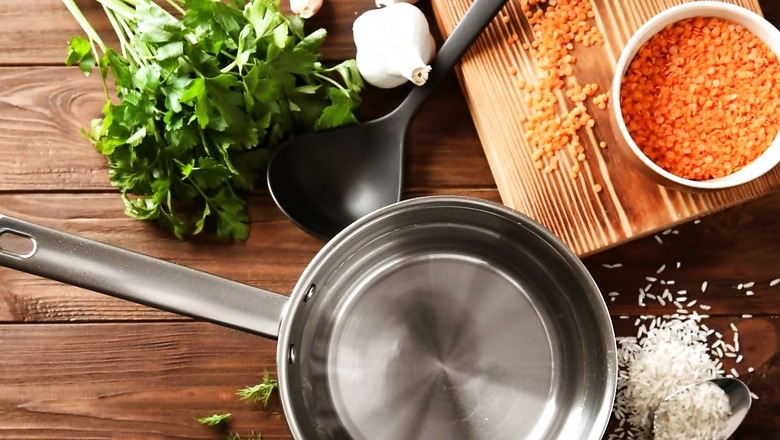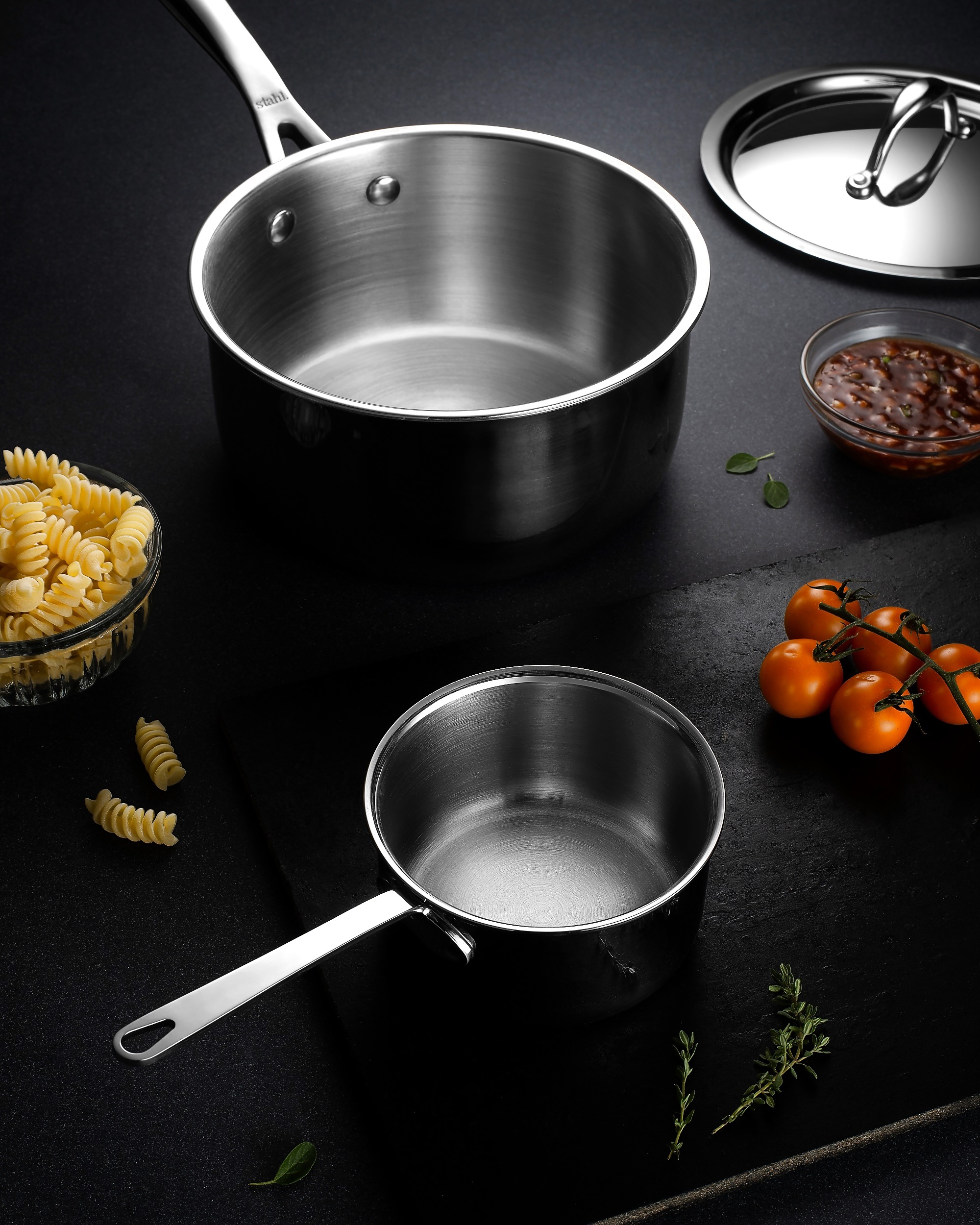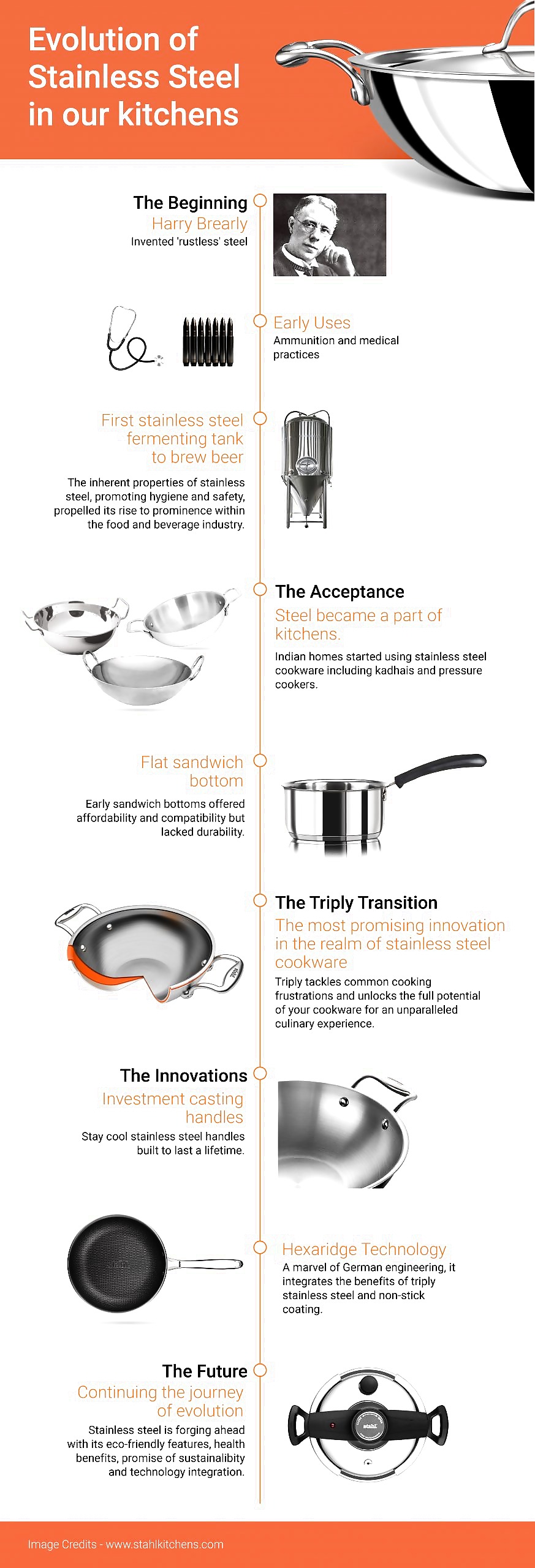
views
Stainless steel is one of the defining discoveries in modern science. Owing to its remarkable properties of heat resistance, durability, and corrosion resistance it has found its place in diverse industries such as automobile, manufacturing, healthcare, and construction. One of stainless steel’s most fascinating roles today is perhaps in our very own kitchens. It’s simple yet robust design, coupled with durability and easy maintenance, have made it popular in countless households worldwide. As we explore the evolution of this remarkable metal, we unravel why it’s become such a big part of our daily lives.

The Beginning:
The journey of stainless steel began in 1913 when metallurgist Harry Brearley of Sheffield, UK discovered steel while prolonging the life of gun barrels. He decided to name his invention “Rustless Steel” which later came to be known as “Stainless Steel”. Naturally resistant to rust, this discovery revolutionized various industries. Originally used for ammunition, stainless steel soon found its way into medical tools and the food industry. “The foray of stainless steel into the food industry began with cutlery. In 1928, its versatility was showcased when the first stainless steel fermenting vessel was used to brew beer after passing stringent hygiene tests. This pivotal moment paved the way for stainless steel’s role in cookware worldwide,” says Dhruv Agarwal, Director, Stahl.
The Acceptance
By the mid-1900s stainless steel had become a part of kitchens across the world. Indian homes were using stainless steel cookware including pressure cookers. It made its way into restaurant kitchens as well as marriage dowries! Despite its benefits steel was not the material of choice because of the frequent food sticking and burning. By the 2000s it was also becoming crucial for such cookware to be compatible across multiple cooktops including induction. “To counter such issues, the sandwich bottom cookware was invented. This had one layer of aluminum sandwiched between two layers of steel at the base of the cookware. It became known over a period of time that aluminum could react with food and also warp and scratch over time. Steel despite being more expensive was non-reactive, healthier and more durable. Thus began the decent of aluminum in kitchens and the rise of stainless steel,” adds Agarwal.

The Triply Transition
Since the early 2000s technological advancements have significantly improved stainless steel cookware.
While sandwich bottom steel cookware was offering pocket friendly options, it lacked durability. Over a period of time the bottom layer tended to separate from the body of the cookware. To counter such issues a material was needed which gave uniform heating as well as durability. Enter triply technology! “Triply cookware, pioneered in India by brands like Stahl, has revolutionized the industry. By fusing multiple layers of metal, including aluminum or copper, between stainless steel, triply cookware ensures durability and efficient heat distribution. This prevents hot spots and promotes even cooking. Its non-reactive surface resists rust and delivers ease of maintenance. Contemporary triply cookware is compatible with all cooktops, including induction, and is oven and dishwasher safe. Its innovative design preserves nutrients in food, making it a safe and reliable choice,” shares Agarwal.
The Innovations
There are other advancements which have taken place over the years along with the body of the cookware. Today, innovative companies are using advanced technology such as investment casting to make their handles more ergonomic and designed different. Such thoughtfully designed handles allow for better control while flipping, stirring, or pouring from your stainless steel cookware!
While stainless steel cookware acceptance was growing by leaps and bounds, there was a need for a better solution to replace non-stick cookware. Thus, came about inventions such as HexaRidge offering a perfect blend of geometry and science, seamlessly integrating the benefits of triply stainless steel and nonstick coatings without the drawbacks associated with each. This technology is a marvel of German engineering along with being remarkably resistant to scratches caused by metal spoons and spatulas, making it scratch-proof!
The Future
Agarwal feels, “Stainless steel has definitely become a kitchen favorite, growing from its humble beginnings to amazing innovations. Its enduring popularity stems from its durability, versatility, and safety in cooking. Its eco-friendly features with a promise of sustainability ensure it’ll be a kitchen staple for years to come. Looking forward, the future of stainless steel cookware is really exciting! With new designs and technology integration like ‘smart cookware’ for modern kitchens, stainless steel is set to continue its extraordinary journey of evolution, elevating the cooking experience and taking it to new levels of excellence.”



















Comments
0 comment